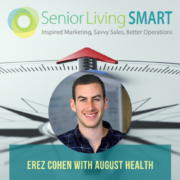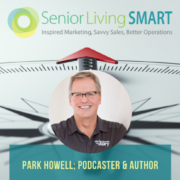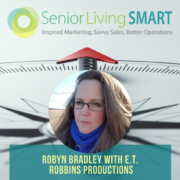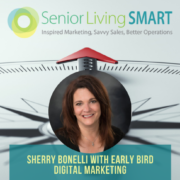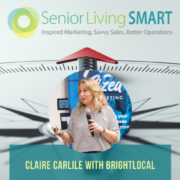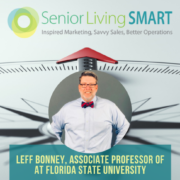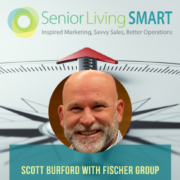Senior Living Marketing Perspectives: Utilizing Google Ads in the Senior Living Space
Episode Summary:
In this episode of “Senior Living Marketing Perspectives,” host Debbie Howard and guest Chris Zook delve into the topic of using Google Ads for senior living communities. They discuss the importance of differentiation, targeting the right audience, and optimizing strategies to maximize conversions.
Chris provides insights on creating effective landing pages and emphasizes the significance of marketing automation in nurturing leads throughout the sales cycle. Overall, Google Ads prove to be a must-have tool for senior living communities to reach their target audience and increase conversions.
Topics Discussed and Key Points:
Differentiating Senior Living Communities: Debbie and Chris highlight the importance of creating a unique strategy for each senior living community, even if they offer similar services and amenities. Each community has its personality, presentation style, and target audience.
Financial Qualification Concerns: Debbie raises the concern that it’s challenging to financially qualify potential residents. Chris explains that although it’s not possible to target income levels explicitly, senior living communities can mention their pricing in ads to attract individuals who can afford their services. He also discusses the use of negative keywords on Google Ads to refine lead quality.
Designing a Strategy: Debbie and Chris discuss the nuances of designing a marketing strategy based on the desired types of leads. They explore the importance of understanding the different stages of the sales funnel and tailoring the approach accordingly. They mention offering options like downloading a brochure, speaking to an advisor, or scheduling a visit in ads to accommodate different preferences.
Power of Marketing Automation: Chris emphasizes the value of marketing automation in senior living marketing due to the longer sales cycle and the need for multiple touchpoints. He explains how offering a brochure as a low-commitment lead generation opportunity can help capture leads who are researching senior living options. Marketing automation, combined with regular email touchpoints, keeps potential residents engaged and increases the chances of conversion.
Landing Page Design: Chris discusses the importance of well-designed landing pages focusing on one specific purpose. He emphasizes the need for mobile-friendly designs, clear calls to action, and an intuitive layout. The goal is to make it easy for prospects to understand what they need to do next and maximize conversions.
Effective Conversion Rates: Debbie asks about the ideal conversion rate for senior living campaigns. Chris explains that the conversion rate can vary depending on geography and budget. Generally, a conversion rate of 8-15% is considered strong. Chris emphasizes that effective advertising is as much about allowing prospects to self-qualify out of the sales funnel as it is about bringing them in.
Understanding the Value of Conversions: Debbie and Chris address the question of how much to pay for a conversion. Chris highlights that conversions are a valuable digital currency, as they provide contact information and indicate genuine interest. He explains that finding the right balance between attracting prospects and filtering out unqualified leads is crucial for both the community and the prospects.
Resources:
Connect with Chris Zook on LinkedIn
Blog: Googe Ads for Senior Living: How to Find the Prospects who need you



